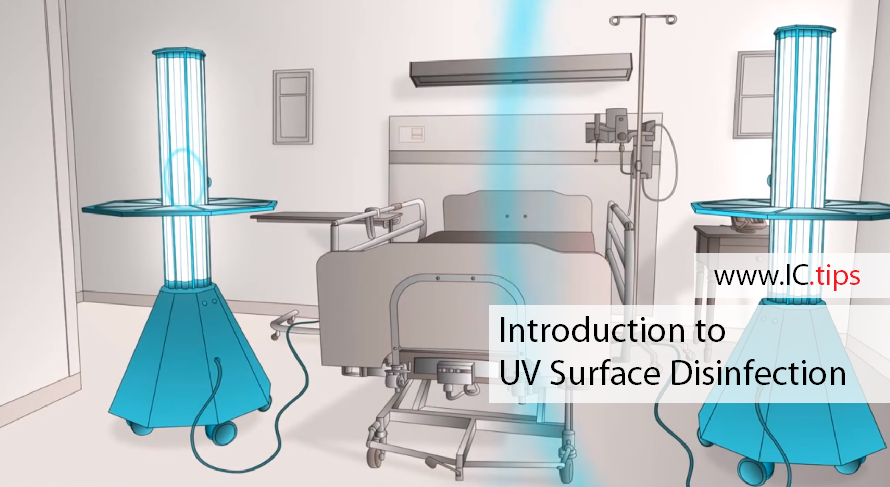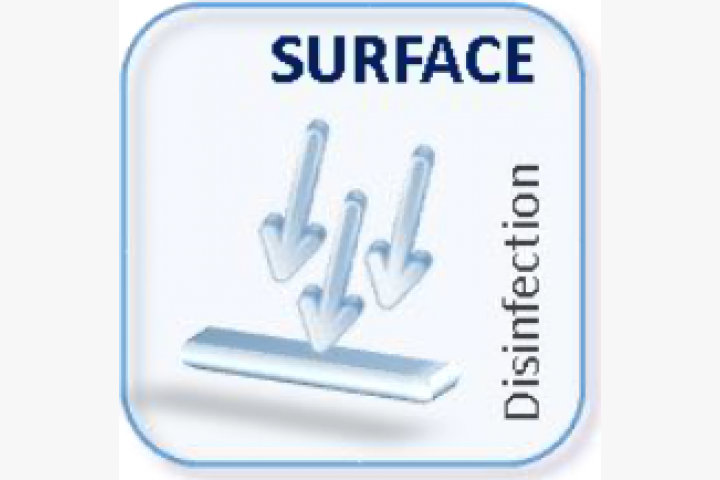Changing Hygiene Specifications: The Function of UV Surface Disinfection in Health And Wellness
Changing Hygiene Specifications: The Function of UV Surface Disinfection in Health And Wellness
Blog Article
Harnessing the Prospective of UV Sanitation: Shielding Health And Wellness and Health
As the world faces the continuous pandemic and the constant danger of transmittable conditions, the value of maintaining health and health has actually never ever been extra obvious. In this context, utilizing the possibility of UV sanitation becomes an appealing service. UV sanitation, a technology widely utilized in various markets, has actually confirmed effective in removing dangerous virus. There is a lot more to check out behind the science of UV sanitation and its applications. From comprehending the systems at play to implementing this technology in our everyday lives, this conversation aims to clarify the possibility of UV sanitation and its duty in protecting our health and hygiene.
Understanding UV Sanitation
UV sanitation is an extremely reliable and widely utilized technique for making sure and removing unsafe pathogens health and wellness and hygiene. This method makes use of ultraviolet (UV) light to suspend microbes by damaging their DNA and preventing them from replicating. UV sanitation is particularly effective versus germs, infections, and other bacteria that can trigger infections and conditions.
The concept behind UV disinfection is straightforward yet effective. When UV light is given off at a details wavelength, it passes through the microbe's cell wall and disrupts its hereditary product. This procedure, called photodissociation, causes the formation of thymine dimers, which protect against the microorganism from replicating and providing it harmless. UV disinfection can be used in numerous settings, consisting of water treatment plants, healthcare facilities, food handling markets, and air filtration systems.
Among the advantages of UV sanitation is its capacity to properly and efficiently eliminate a vast array of pathogens without the demand for chemicals or ingredients. Unlike other sanitation methods, such as chlorine or ozone, UV disinfection does not introduce unsafe spin-offs or chemical deposits into the atmosphere. Furthermore, UV disinfection is a non-contact procedure, which means that it does not need physical call with the microorganisms, lessening the threat of cross-contamination.

The Scientific Research Behind UV Disinfection
The efficiency of UV sanitation lies in its ability to interfere with the hereditary material of microorganisms, providing them not able to replicate and consequently eliminating their unsafe capacity. UV, or ultraviolet, radiation is a type of electromagnetic radiation with wavelengths much shorter than noticeable light. It is classified right into 3 kinds: UV-B, uv-a, and uv-c. UV-C radiation, specifically, has the quickest wavelength and the highest possible energy. Since it can pass through the cell walls of microorganisms and harm their DNA or RNA., this high-energy UV-C radiation is most efficient in disinfection applications.
When microorganisms are revealed to UV-C radiation, the energy is soaked up by their hereditary product, causing bonds to damage and creating chemical reactions that disrupt their capability to reproduce. This protects against the bacteria from duplicating and spreading infection. UV disinfection is particularly efficient against infections, fungi, and bacteria, consisting of common pathogens such as Escherichia coli, Salmonella, and Flu.
The scientific research behind UV disinfection is sustained by substantial study and researches. It has been shown that exposure to an adequate dosage of UV-C radiation can achieve a high level of disinfection, often surpassing 99.9% efficacy in eliminating microbes. Nevertheless, it is necessary to note that the effectiveness of UV sanitation relies on various factors, consisting of the strength of UV-C radiation, direct exposure time, distance from the UV source, and the vulnerability of the microorganism to UV radiation.
Applications of UV Sanitation
Given the comprehensive study and efficiency of UV disinfection in interrupting the genetic product of microorganisms, it is crucial to explore the different functional applications of this innovation. UV sanitation has actually proven to be an important tool in a large range of sectors where keeping a risk-free and clean environment is vital.
One significant application of UV sanitation is in health care settings. UV light can be utilized to disinfect surfaces, equipment, and also the air in medical facilities and medical centers. This aids to minimize the danger of healthcare-associated infections and ensures a much safer atmosphere for patients and health care workers.
An additional important application remains in the food and drink sector. UV sanitation is used to treat water and eliminate unsafe virus, such as E. coli and Salmonella, from the production process. uv surface disinfection. This makes certain the safety and security and top quality of the products we consume
UV disinfection is additionally widely utilized in water treatment plants and wastewater therapy centers. It is an effective method for destroying unsafe bacteria, infections, and bloodsuckers that can be existing in water resources. This assists to offer safe and tidy alcohol consumption water to neighborhoods and protect the setting from pollution.
Additionally, UV sanitation is used in the pharmaceutical market to disinfect devices and maintain the honesty of items. It is also utilized in laboratories and research study centers to avoid contamination and ensure exact outcomes.
Benefits of UV Sanitation Technology
One noteworthy advantage of employing UV sanitation innovation is its ability to properly eradicate bacteria without the usage of rough chemicals. This is especially helpful in numerous setups, such as medical care centers, water treatment plants, and food handling industries, where the visibility of hazardous pathogens presents a significant threat to public wellness and security.
Unlike typical disinfection techniques that depend on chemicals like chlorine or ozone, UV disinfection modern technology uses ultraviolet light to target and destroy the DNA of microorganisms, effectively neutralizing their capacity to recreate and create infections. This procedure not only eliminates the requirement for potentially unsafe chemicals however also lowers the threat of chemical deposit or by-products remaining in the cured environment.

Moreover, UV sanitation modern technology is eco pleasant. As it does not count on the use of chemicals, it removes the demand for their transportation, production, and disposal, reducing the total carbon footprint connected with disinfection processes. In addition, UV disinfection systems have a longer life expectancy compared to chemical-based approaches, leading to less constant replacement and more minimizing waste.
Implementing UV Disinfection in Daily Life
To wikipedia reference efficiently execute UV sanitation in day-to-day live, individuals and organizations can incorporate portable UV disinfecting tools right into their hygiene regimens and cleansing techniques. These gadgets are created to release ultraviolet light, which has been confirmed to eliminate or inactivate a large range of bacteria, consisting of infections, germs, and fungi. By making use of mobile UV sterilizing devices, people can sanitize frequently touched things and surface areas, such as cell phones, laptops, doorknobs, and keys, lowering the risk of spreading bacteria and infections.
In addition to integrating mobile UV sterilizing gadgets, it is very important to adhere to proper guidelines and recommendations for reliable UV disinfection. This consists of making certain that the gadget is utilized appropriately and for the recommended duration to attain optimum disinfection results. It is likewise critical to focus on precaution, such as using protective glasses and preventing direct exposure of the UV light to the skin.

Moreover, companies can apply UV sanitation modern technology uv surface disinfection in numerous setups to enhance hygiene techniques. As an example, health centers and medical care facilities can use UV sanitation Recommended Site robots to disinfect patient rooms, operating theaters, and other high-touch areas. Food processing industries can incorporate UV disinfection systems right into their manufacturing lines to improve food safety and prevent contamination.
Conclusion
Finally, UV disinfection technology holds excellent potential in safeguarding wellness and hygiene. By utilizing the power of ultraviolet light, it effectively removes dangerous bacteria and decreases the risk of infections. This technology can be applied in numerous setups, such as healthcare facilities, water therapy facilities, and public spaces, giving a reliable and safe approach of sanitation. With its many benefits, UV disinfection is an important tool for preserving a clean and healthy and balanced setting.
Unlike various other disinfection methods, such as chlorine or ozone, UV sanitation does not present unsafe by-products or chemical deposits into the atmosphere. It is essential to keep in mind that the performance of UV disinfection depends on different elements, including the strength of UV-C radiation, direct exposure time, distance from the UV resource, and the sensitivity of the bacterium to UV radiation.
Another benefit of UV sanitation modern technology is its capability to supply continual and fast disinfection. Unlike handbook cleaning approaches, which can be lengthy and require substantial labor, UV sanitation systems can be automated and operate constantly, making sure consistent disinfection without human intervention.To effectively apply UV disinfection in everyday life, companies and individuals can integrate mobile UV sanitizing tools right into their health regimens and cleaning up techniques.
Report this page